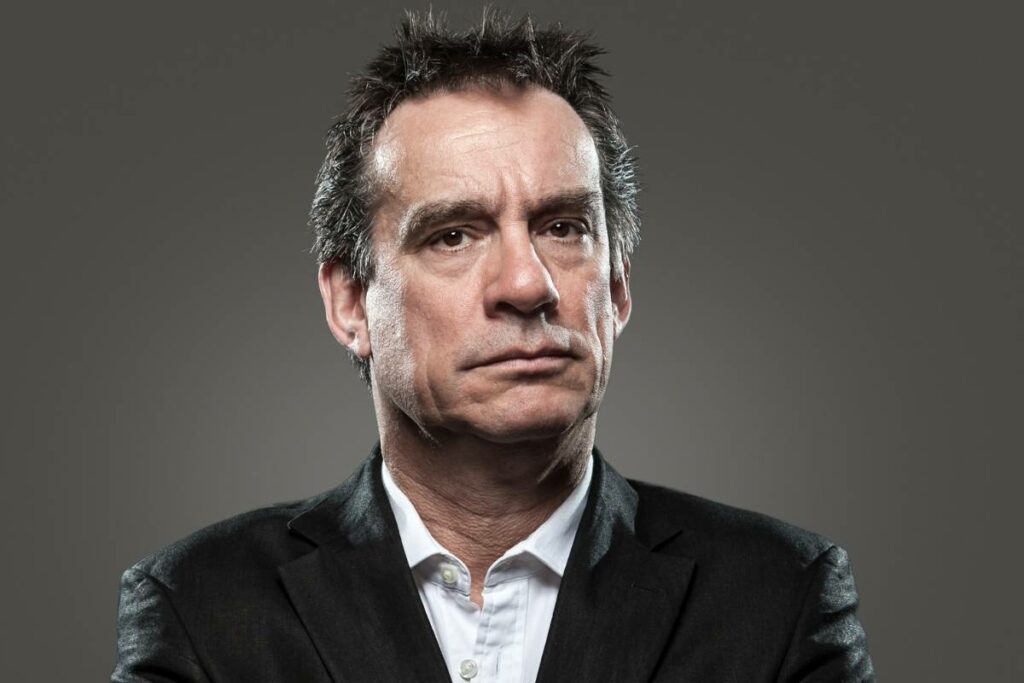What is your face telling the people around you?
Whether it’s fair or not, people are making assumptions about you based on your facial expressions, especially if you have resting b*tch face or resting fart face.
Having a resting b*tch face (RBF) certainly doesn’t mean you’re a b*tch, but that won’t stop people from assuming the worst. (The same goes for resting fart face [RFF] in men.) If you want to be a workplace leader, you need to be adept at controlling facial expressions at work.
Knowing how to control facial expressions, especially RBF and RFF, helps you communicate better, lead more effectively, and exude the kind of executive presence that will help you in your career.
Fix Your Face So It Matches Your (Good) Attitude
Whatever your generation or gender, you send a message you don’t intend when you unconsciously adopt a sour face that doesn’t match your attitude.
A good attitude is a powerful asset at work: it helps you influence others positively and delegate more effectively. But if others don’t see your positive attitude on your face, they won’t know it’s there and that can hinder your career advancement and leadership effectiveness.
Research has shown your influence will go the way the corners of your mouth are turned:
- New York University sponsored research shows happier looking people are judged to be more trustworthy. (Something required of a leader.)
- University of Kansas research found cracking a smile even when you don’t feel it reduces the body’s stress response.
- University of Maryland research found that while emotions influence your face, conversely facial expressions influence emotions.
As a leader, if you can’t smile more at least frown less, because over a short time your expression gets sealed into a permanent facade of extreme displeasure. You will look naturally cross and no one wants to follow that.
It’s as one man, who has RFF told me, “Once people get to know me they really like me, but they never get to know me because I scare them off with the way I look at them”.
What Is Resting B*tch Face/Resting Fart Face?

RBF (and RFF) is unmindfully sagging cheeks where the corners of the mouth are turned down. This facial expression gives you a look that others see as censorious, unapproachable, or like you are permanently mad and are plotting revenge.
You may not even realize your face looks like this. If you’re not sure, check out a mirror or ask a trusted associate to give you feedback.
Even if you don’t have RBF or RFF, you may still need to fix your face. You may not look angry, but you might look bummed out, disinterested, or morose. Either way, you aren’t conveying a positive attitude or confidence.
Does Knowing How To Control Facial Expressions Really Matter?
Yes.
In my book, The Leadership Mind Switch (McGraw-Hill, 2017) co-authored by Kylie Wright-Ford, we engaged in over a 1,000 conversations with C-level executives and found that being “kindly confident” is one of the qualities required to lead.
These executives describe “kindly confident” as: comfortable in your own skin; sureness in self; and understanding that other people’s opinions, attributes, and knowledge matters as much or more than their own. Leaders show “kindly confident” with a suggestion of a smile garnered from lifted facial cheeks with lips not too open or too closed.
Here’s how to combat RBF, RFF, and other facial expressions that aren’t “kindly confident.”
How To Control Facial Expressions: The 2 Step Remedy for RBF and RFF

- Pull your facial cheek muscles up toward the eyes a half-inch. That turns the corners of your mouth up slightly.
- Open your lips apart a quarter-inch like when saying the word ‘cheese-whiz’ or ‘eggplant’.
That two-step combination of the corners of your mouth up and your lips apart a little gives you a look that others see as approachable, interested, attentive, non-judgmental, and self-confident.
Right now stop and take a selfie with your face as you started reading this article. Then take a second selfie after you rearrange your facial expression. See the difference?
This is the expression you need to keep consistently whether you are mad, sad, glad, scared, frustrated. It’s a leader’s “game face”.
If you’re a Boomer, gravity can pull the facial muscle, eyes, and jowls downward into a giant frown. If you’re a millennial or part of Gen Z, your face may also be adhering to gravity, especially if your face is directed to your iPhone and has adopted the blank look that comes with staring at a screen (see this series of photos for examples).
Whichever generation you belong to, you need to retrain your facial muscles into an expression that is awake, alert and alive looking vs the negative appearing resting b*tch face or resting fart face.
Controlling Facial Expressions At Work Is Possible And Necessary
Your face CAN be retrained. Don’t be tempted to either minimize the importance of putting on your game face or despair that it can be done. It is important and it is possible.
I’ve heard all of the justifications for not rearranging your face:
- “My face is just in repose.” (That’s fine… if you are alone behind closed doors.)
- “It’s my natural expression.” (No, you learned it from a parent, teacher, boss.)
- “This is just how I look.” (Only if you choose to…and then you’ll be hurting yourself.)
- “I’m smiling on the inside.” (Then do it on the outside too.)
- “I’m just not a peppy person.” (Nothing to do with pep; everything to do with taking responsibility for your effectiveness.)
- “I can’t fake it.” (For most people their RBF is fake, it’s not how they are at all, it hurts their leadership ability, and they can’t figure out why working so hard isn’t enough.)
Practice making and keeping your face kindly confident as often as possible. The more you practice, the more you will be able to consistently hold your game face. It may not be comfortable to hold it at first, but keep at it because it will eventually become your default facial expression.
Lead More Effectively With Controlled Facial Expressions
Your face tells a story whether you realize it or not. Your facial expression is the most important piece of body language that people read.
As a thinking person, you can be aware of the story you are telling and take responsibility for what your face is communicating. No matter what you may feel inside, your “kindly confident” facial expression can help you lead calmly and generate trust no matter what situation you are facing.
If you want to improve your executive presence and ability to work with others, I am here to help. Contact me to discuss executive coaching, or if you have a group of emerging leaders, for a speaking engagement.

New Book Available Now
Order at Amazon or wherever books are sold.

